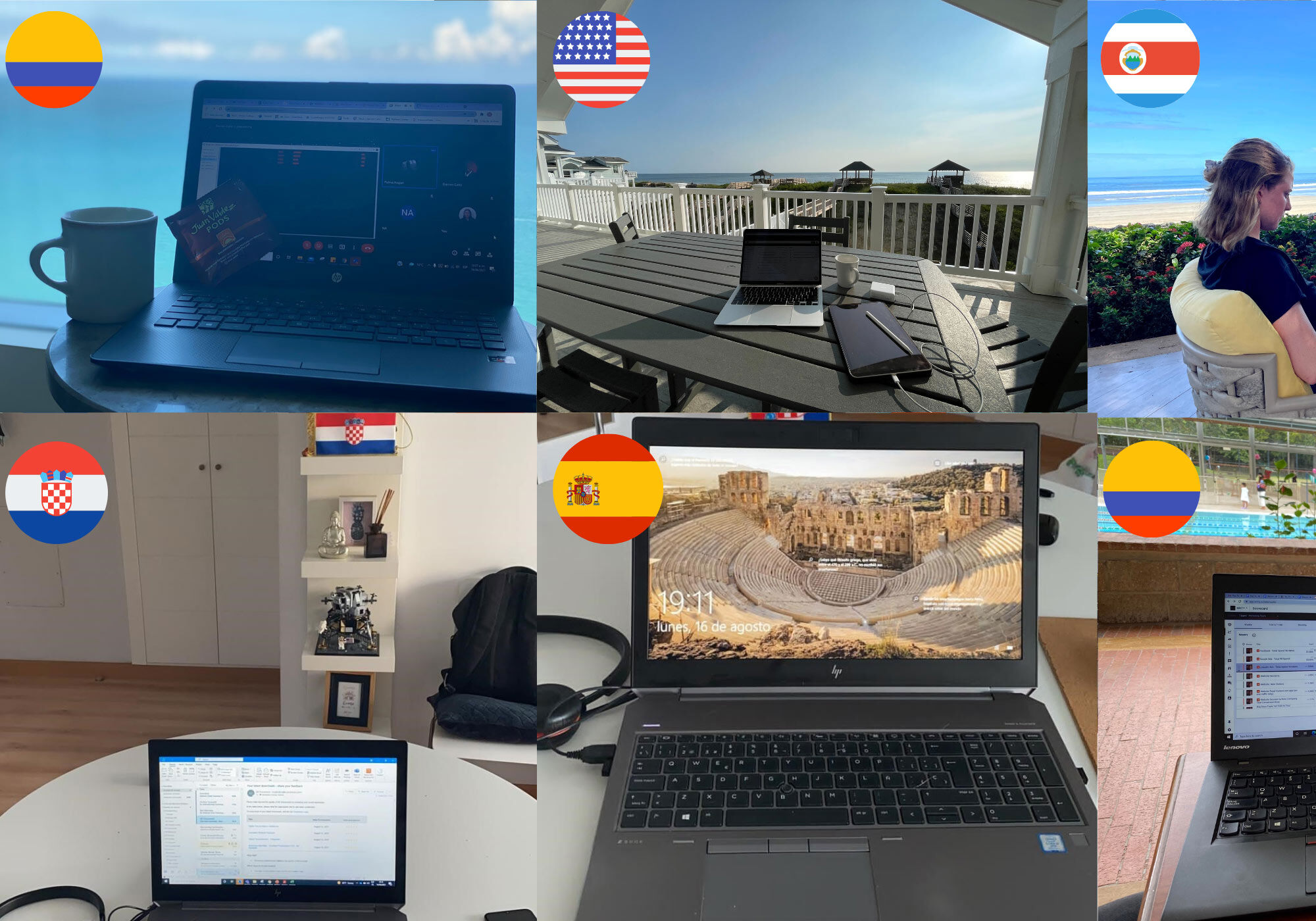3 Tips to Managing International and Global Teams
With shifts in how and where we work, it can be challenging for teams working across miles and time zones. Here are six tips to make it easy to stay connected.
One of the advantages of adjusting company policy to allow for remote work and the ability to Work From Anywhere™ (WFA) is the freedom it provides employees and managers. Freedom to access the best talent in the world – from all over the world and freedom to work where you are most productive – is an unexpected benefit of COVID workplace disruption.
Well-managed dispersed teams (including digital nomads who once may have been in the office) let the organization take full advantage of a 24-hour day. For instance, team members in London working with colleagues in San Francisco and Bangalore can continue to be productive around the clock and around the globe.
This can be enormously liberating for companies and team members. But there are challenges to leading a WFA team working across different time zones.
Here are some tips on accomplishing extraordinary things with a remote or hybrid team with a workforce that's in flow and increasingly global.
Build a communications strategy.
In a global WFA environment, we suggest a communications strategy with an infrastructure to support it. Obviously, this includes live video calls. They're important, especially for weekly meetings. But as important as live video meetings are, remote teams' successful and happy management requires additional tools to support collaboration. It's just too taxing and complex to schedule.
Establish reasonable expectations for response times.
When working with people across time zones and borders, internal communication processes might include response time, setting expectations and agreements to minimize concerns. For example, some colleagues may already be asleep at the start of the workday for others, so leaders must allow for that. Some teams might require some overlap in working hours for meetings and collaboration. Others put whole business operating systems in place, increasing the visibility and transparency of the work being performed, by whom and on what timeline.
Embrace written communications.
While emails and instant messaging may not be as rich an experience as live video conferencing, they have their advantages. Overall, people tend to take more care with what they type or write. Leaders can build on this by coaching team members to be even more clear and concise in their communications — mindfulness matters. Because context is often absent from text and/or email communications, it's important to provide necessary specifics to prevent misunderstandings.
Want to learn more about managing remote and hybrid teams across the globe? Subscribe below to our blog!

.png)




